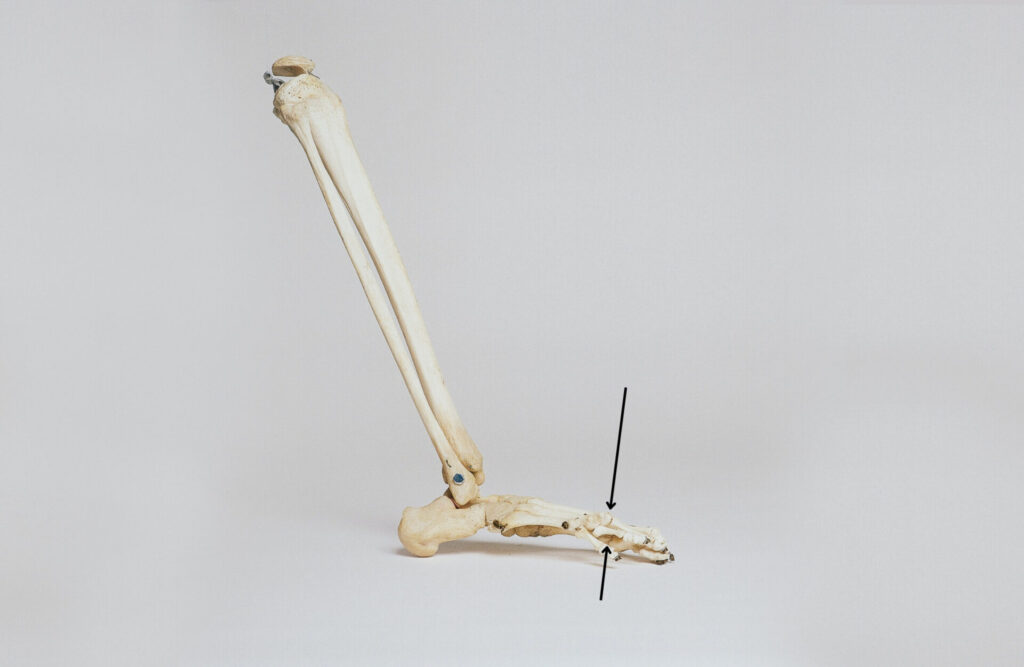Learn more about Deep and Superficial Transverse Metatarsal Ligaments Injury
The deep transverse metatarsal ligaments (DTML) play an important role in stabilizing the metatarsal bones and manipulating foot transverse arch deformation.
The deep transverse metatarsal ligament is a narrow band which runs across and also connects together the heads of all the metatarsal bones. It is blended anteriorly with the plantar (glenoid) ligaments of the metatarsophalangeal articulations. Its plantar surface is concave where the Flexor tendons run below it; above it the tendons of the Interossei pass to their insertions. It then differs from the transverse metacarpal ligament in that it connects the metatarsal to the others.
This ligament is very strong, as it is above the plantar nerve, creating the ceiling of the nerve compartment. Every step, the ground reaction force pushes up on the enlarged nerve, but the DTML pushes down. Although it didn’t contribute substantially to cause the foot deformity such as hallux valgus. However, the biomechanical research about DTML in the foot maneuver is quite few.
The superficial transverse metatarsal ligament composes distal transverse fibrous bands.
Moreover, the deep transverse metatarsal ligament is considered one of the contracted elements of the lateral MTP joint in hallux valgus. Some surgeons think that release of this ligament is necessary for complete correction, whereas others think that release of this ligament does not contribute to hallux valgus correction.
Hence, the DTML has a significant role in maintaining lesser MTPJ ligament stability. Both unilateral and bilateral DTML transections caused substantial instability of the lesser MTPJ. The DTML is part of the natural static restraint to dorsiflexion or dorsal subluxation of the lesser MTPJ.
Are you experiencing this condition? One of our podiatrist can assist and recommend what treatment options are best to get you back on track. ✅
Schedule an appointment here or you may call us at 44 (0) 207 101 4000. 📞
We hope you have a feetastic day! 👣☀️
-The Chelsea Clinic and Team




